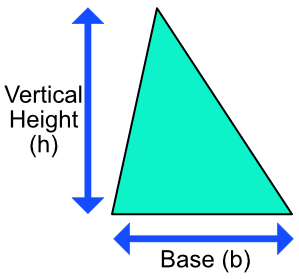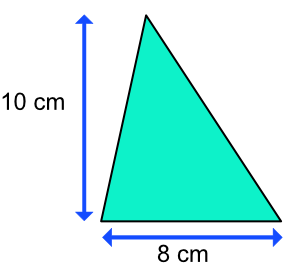The area of a triangle is given by: `frac(1)(2)bh`

where `b` is the distance along the base of the triangle, and `h` is the vertical height of the triangle.
You do not need to know this, but this is why it works:
Copy the triangle, and rotate and place it to form a parallelogram.
The area of a parallelogram = base x vertical height.
The area of a triangle is half of that.

What is the area of this triangle?

| Area of a triangle | `= frac(1)(2)bh` |
| `= frac(1)(2) xx 10 xx 8` | |
| `= 40 cm^2` |
Answer: 40cm2
A triangle is twice as high as it is wide. If the area of the triangle is 32 cm2, what is the height of the triangle?
| Area of Triangle | = base x height | |
| Let the base be `x`: | `h` | `= 2x` |
| Substitute: | 32 | `= x xx 2x` |
| 32 | `= 2x^2` | |
| Divide both sides by 2: | 16 | `= x^2` |
| Square root both sides: | 4 | `= x` |
Answer: 4 cm